The enchanting Croatian island of Vis has had many identities over the last few thousand years. For a time, it was an ancient Greek colony known as Issa. Then, from the 1950s until the 1980s, Vis was a secret Yugoslavian naval base that was off-limits to foreigners. From there, tourists — and filmmakers — started discovering Vis’ many charms, with the Mamma Mia sequel being filmed on Vis (and not Greece) in 2017.
Shawn and I are fortunate to have spent several winters in Croatia. But, it would be a few years before we would venture to Vis, which is about 2.5 hours away from the mainland city of Split.
Skip Ahead:
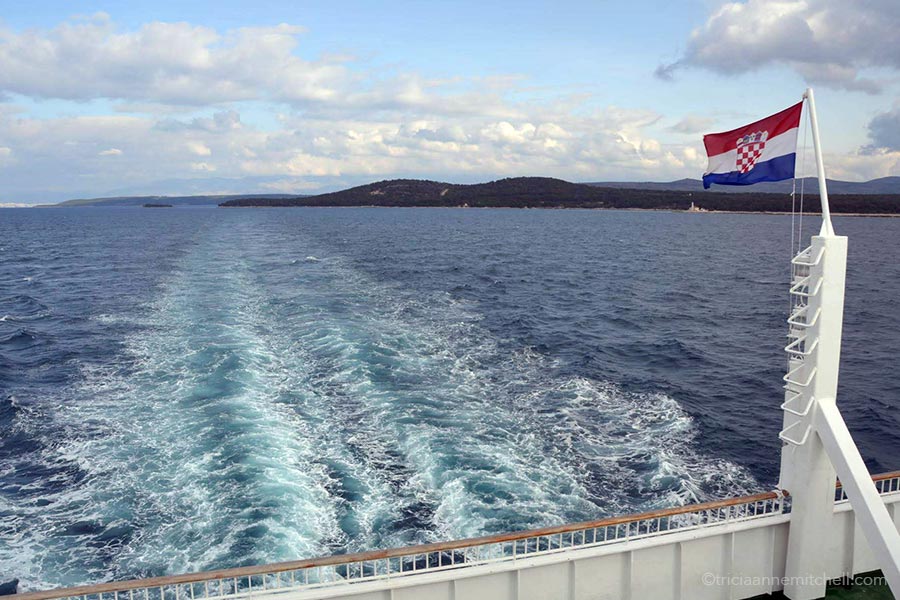
One February, just as the Dalmatia region was starting to come alive again with flowers and warmer weather, we decided to head out to Vis for four nights. Our Croatian friends warned us that Vis would be quiet in February, but that promised solitude only added to its allure! We were craving brilliant sunsets, so we decided to base ourselves in the coastal town of Komiža, which faces the south. Tiny Komiža, which has been a center of fishing activity for centuries, is home to about 1,400 people.

Our winter days on Vis were spent simply soaking up the details:
- We took time to take in the scent of lush lavender bushes and rosemary. We marveled at the plump lemons and oranges growing in residents’ gardens.
- We watched the birds flit from one blossom-filled tree to another. As they touched down on the flowery branches, petals danced to the ground, resembling pink snowflakes.
- We walked to the St. Nicholas Church, whose namesake, Saint Nicholas, is the protector of seamen. Every December 6th (St. Nicholas Day), Komiža residents commemorate the saint’s day by burning decrepit wooden fishing boats. As we sat on the white-stone terrace of the church, we looked out at the shimmering Adriatic Sea. We’d brought a flask of coffee and slices of homemade banana bread with us, so we enjoyed a coffee break, too. (If you’re looking for a superb banana bread recipe, be sure to check out Cookie + Kate’s recipe at that link.)
- We popped into a neighborhood café / bar and bought two glasses of their house wine made with Vis’ signature Vugava grape. Crisp and white, it’s similar to Viognier.
- We walked through the rugged landscape, watching the waves crash far below us.
- We were befriended by an affectionate cat on the beach. We nicknamed her Issa.
- We showed our gratitude for the beautiful environment by picking up pieces of plastic that had washed up on the beach.
- We acknowledged the kindness of strangers, most notably a man we met who was tending his vines. When he heard we were visiting Vis for a few days, he offered us the use of his moped for free — no strings attached. We decided to just explore Komiža on foot, nevertheless, we were touched by his thoughtful gesture.
- We sat on our apartment’s balcony, watching the sun set behind the neighboring island of Biševo.
There’s certainly much, much more to do and see in Vis — especially during the warm months! The next time we visit Vis, we look forward to seeing the celebrated Blue Cave on Biševo, as well as the Issa Archaeological Museum in Vis Town, which houses ancient Greek relics.
Have a peek at the Komiža Tourist Board website for more ideas about what to do on Vis.
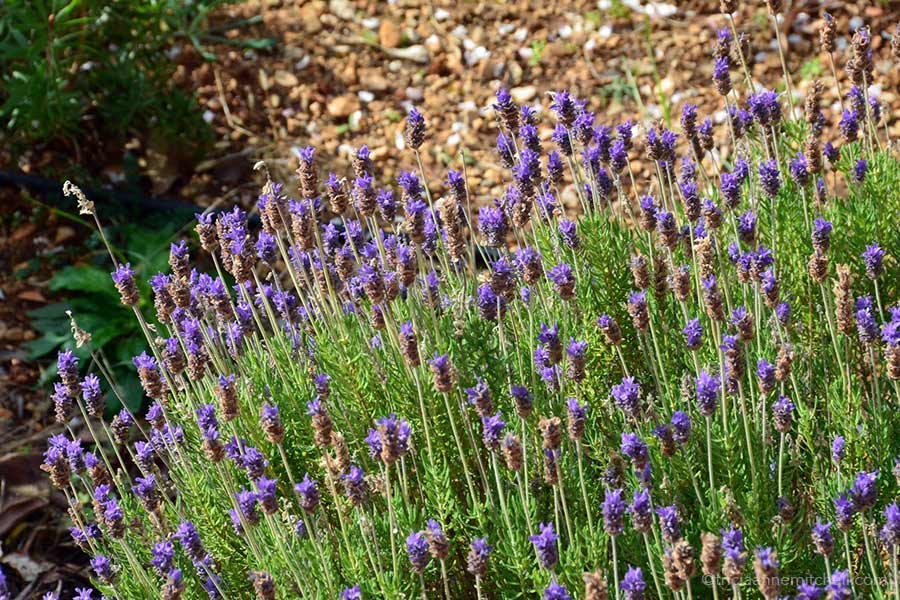



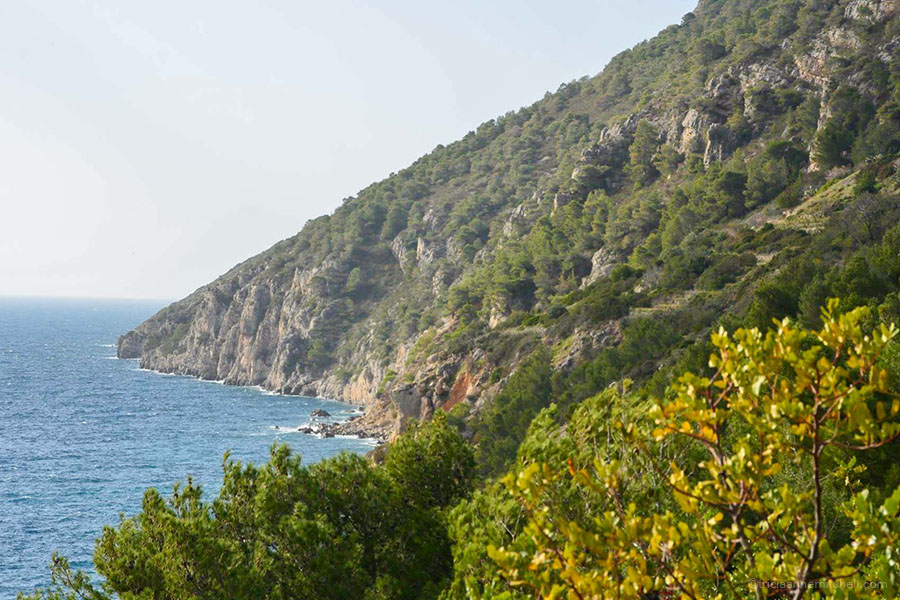
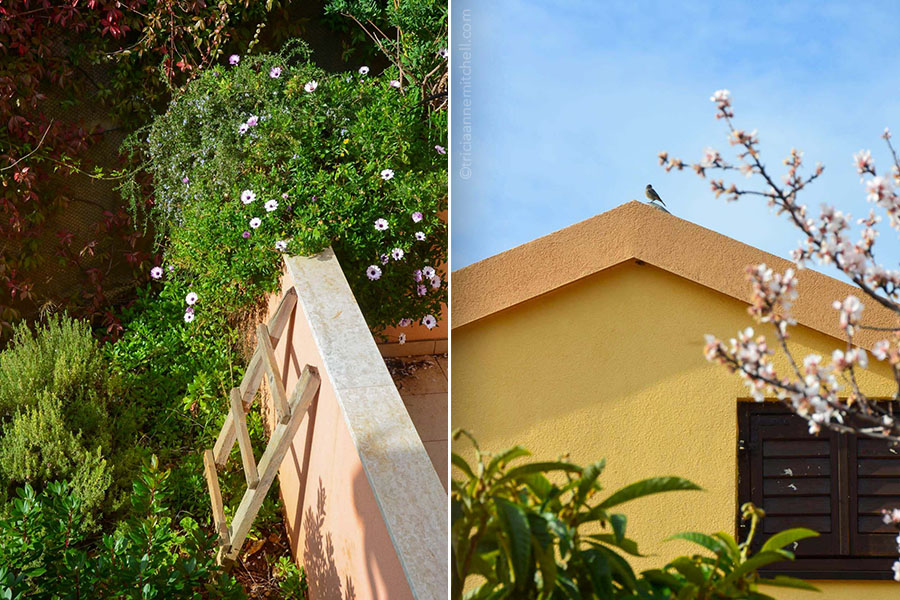
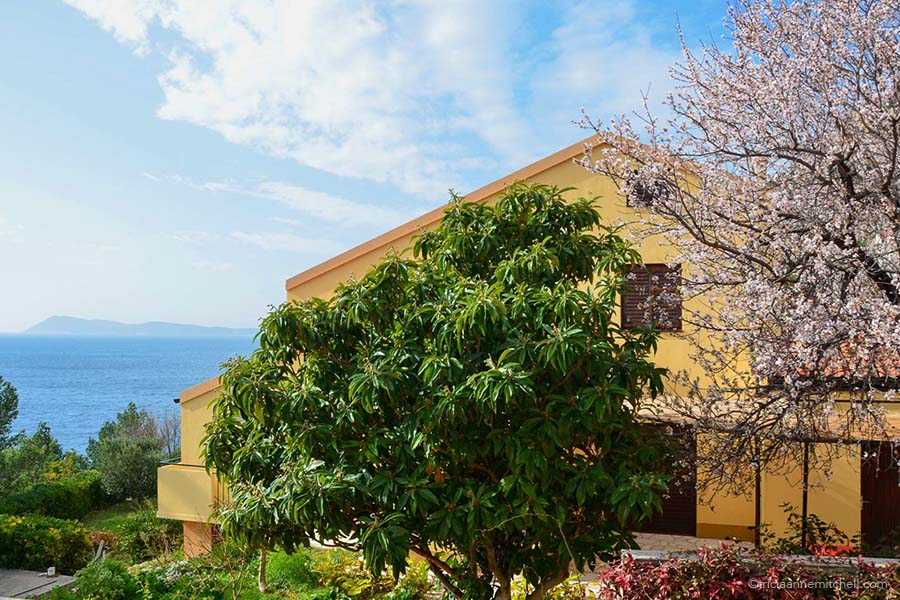

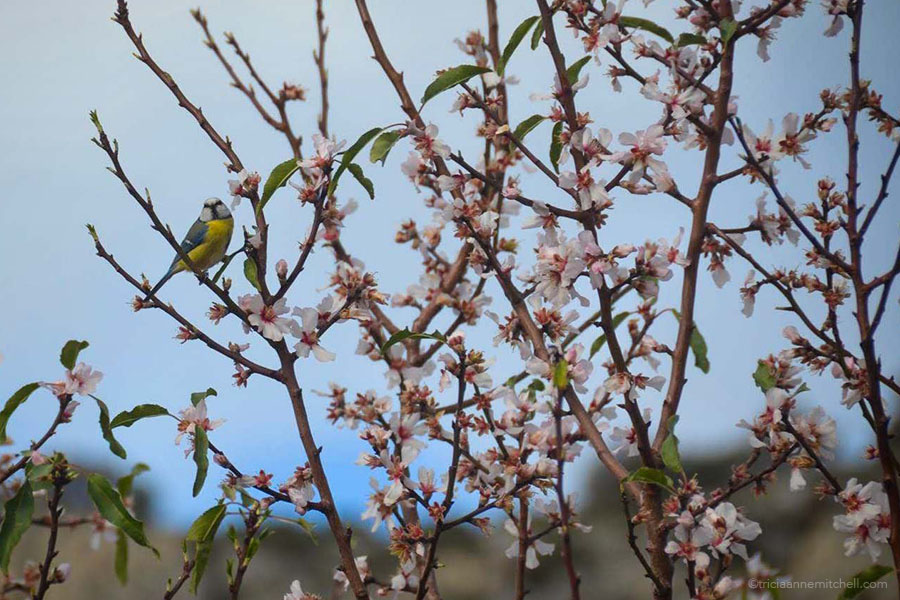
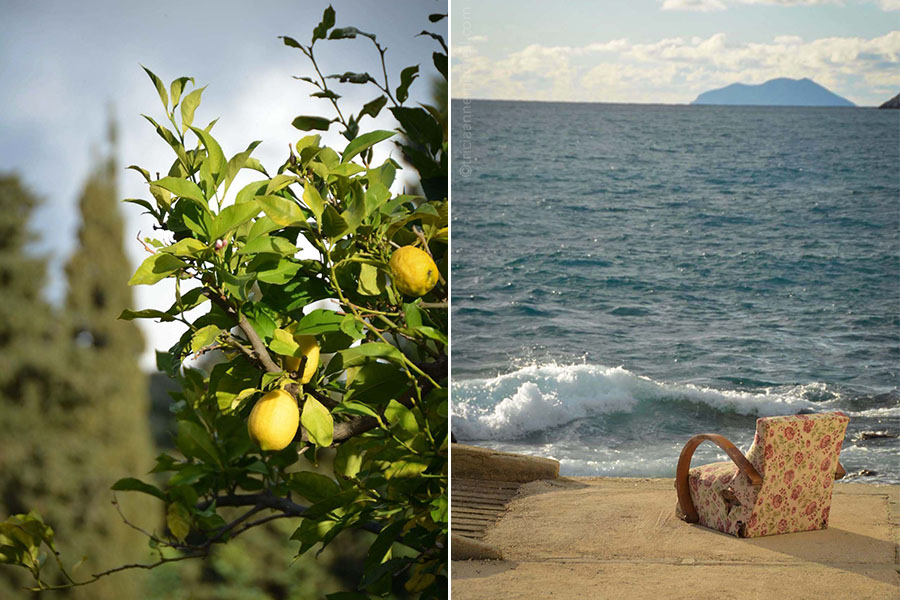




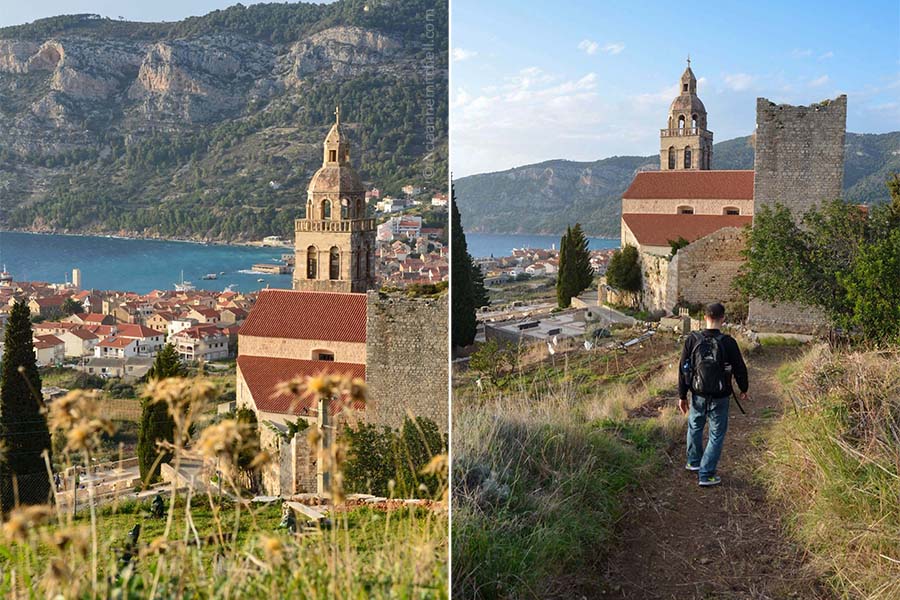


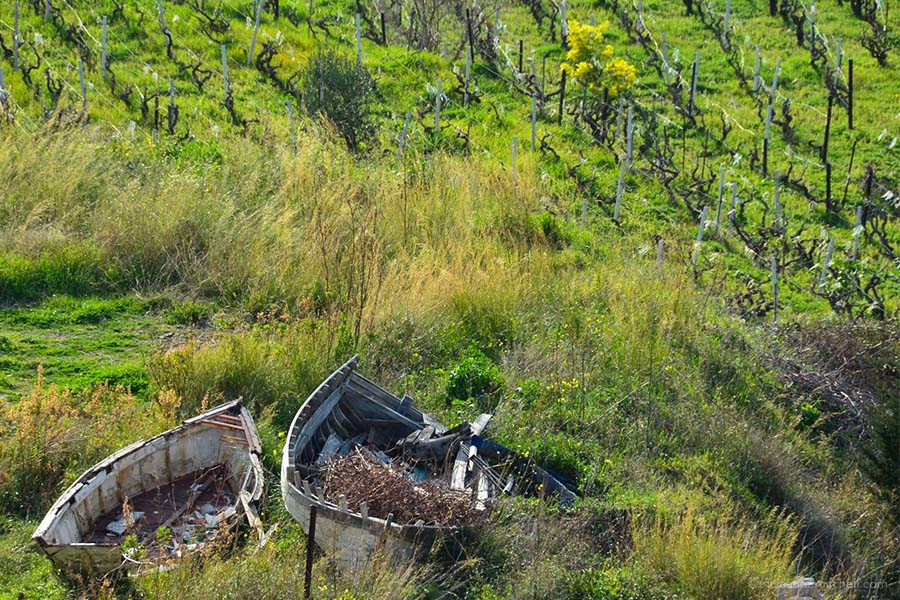

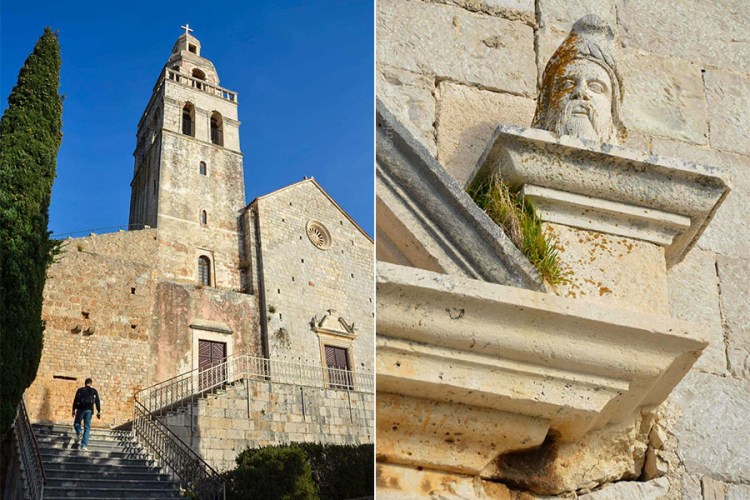
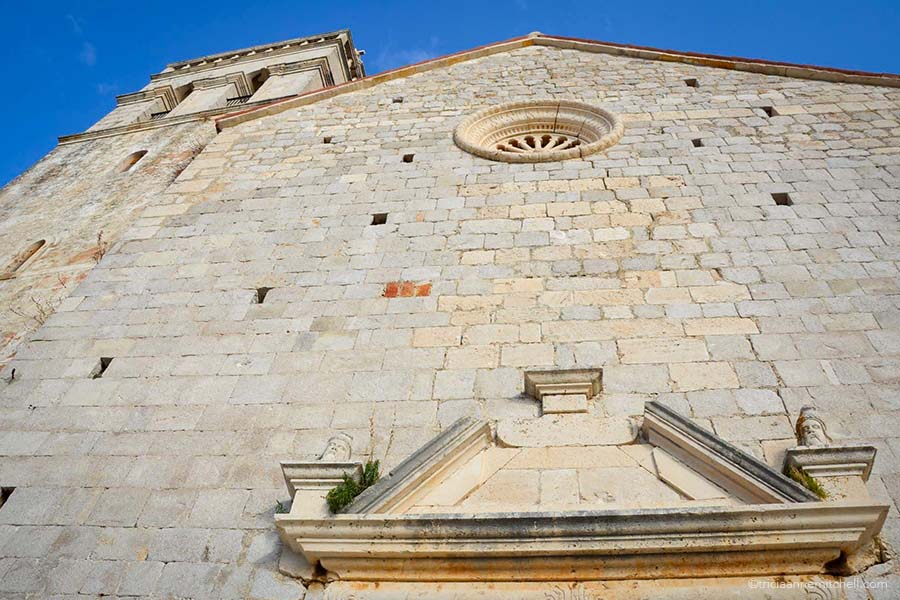


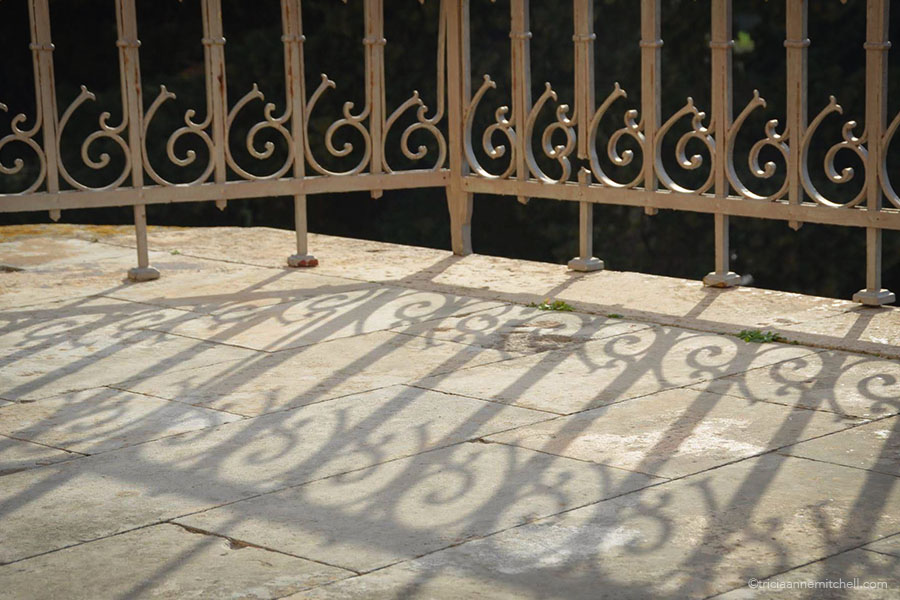
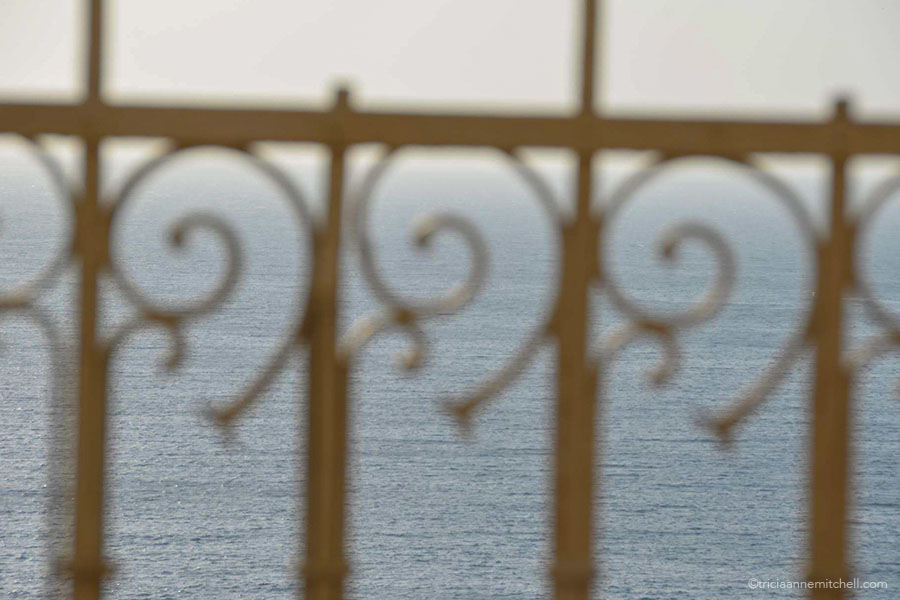
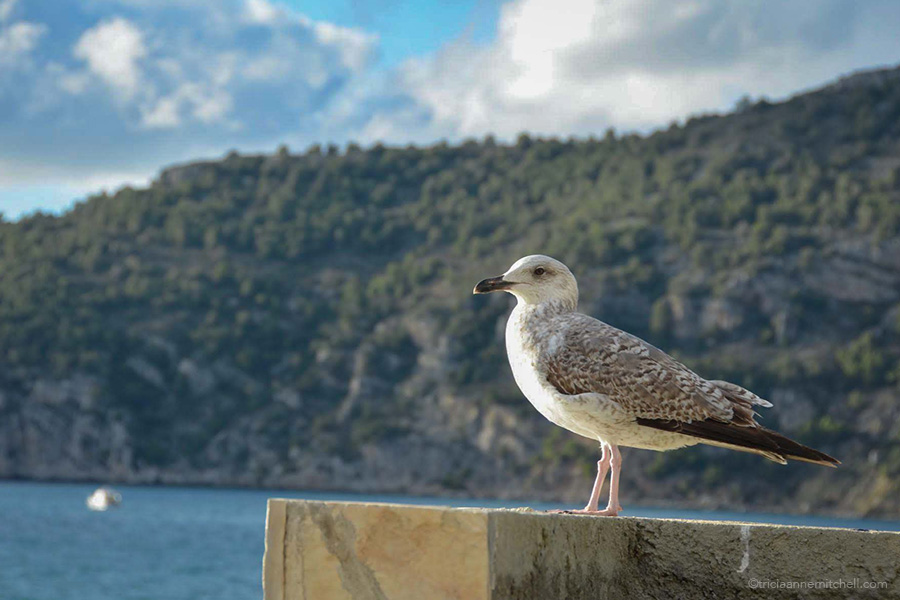
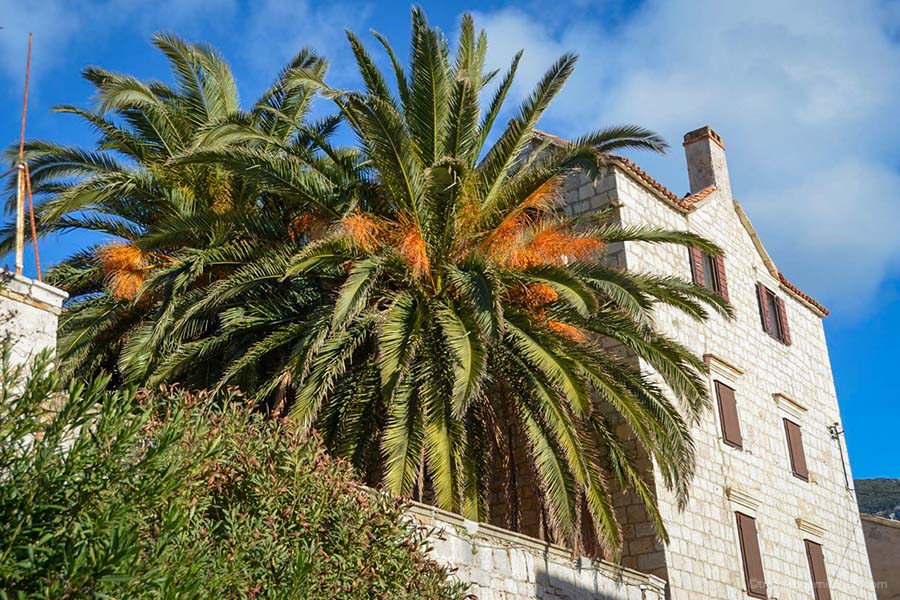
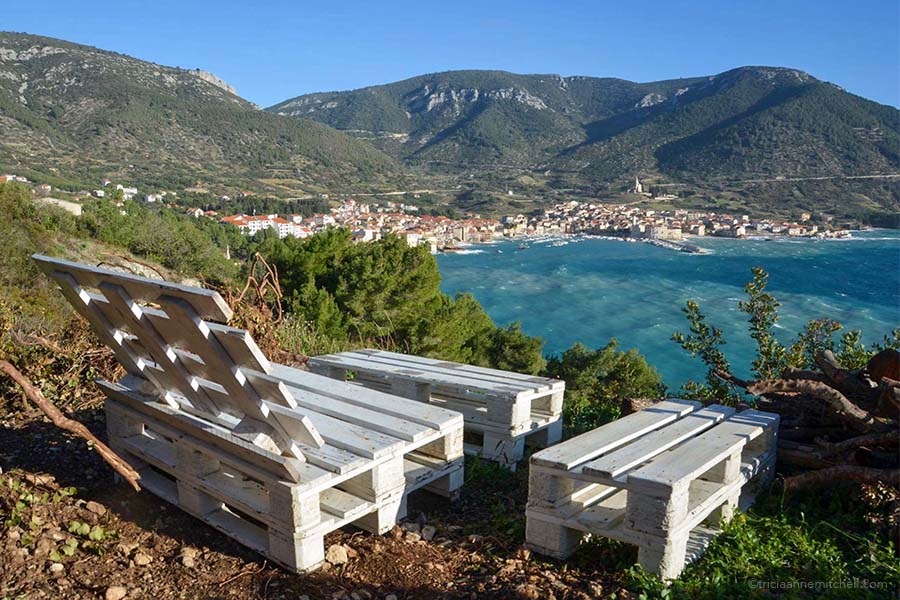

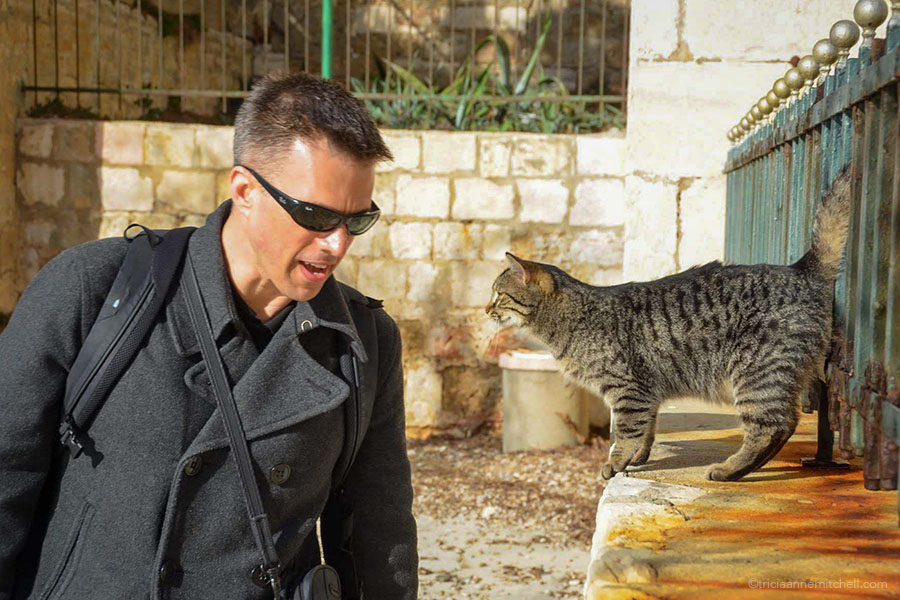



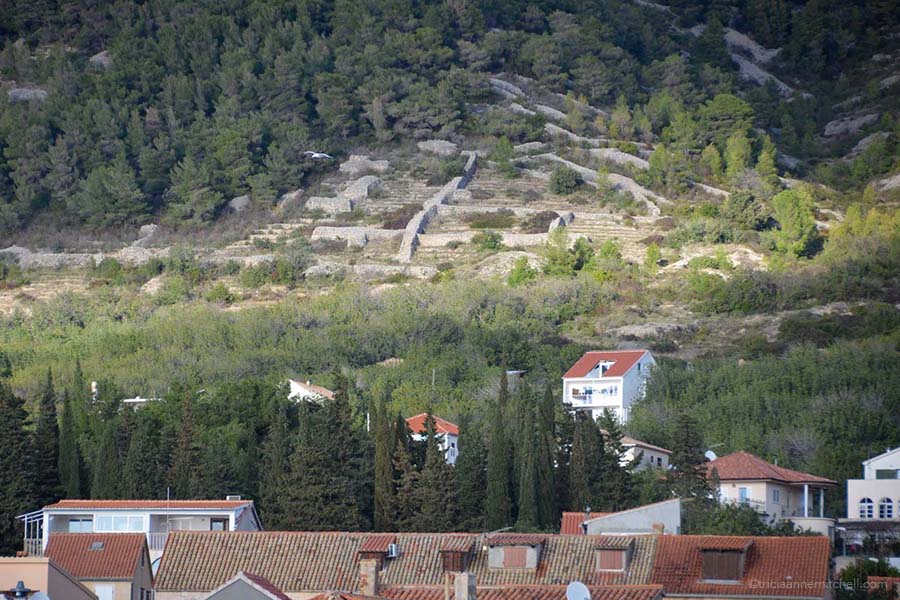
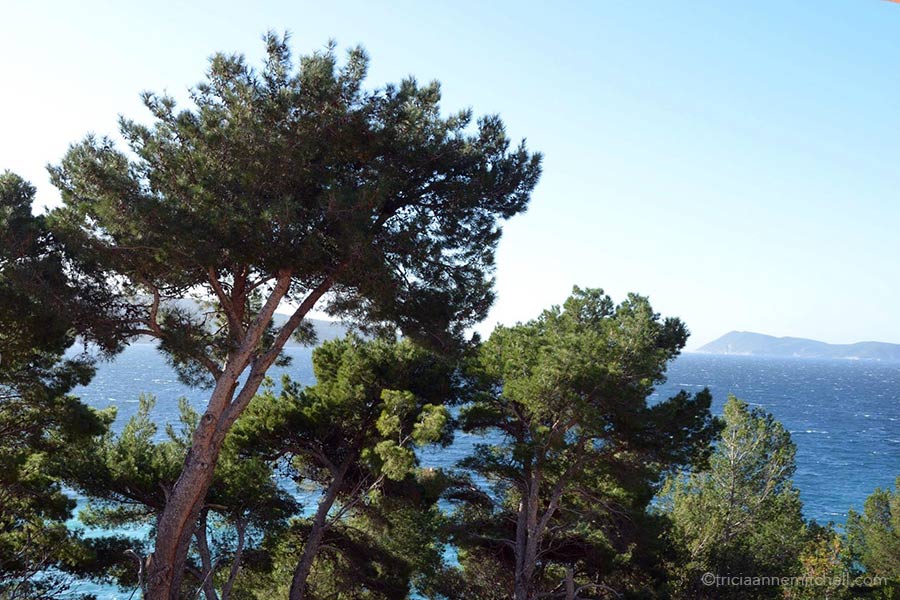
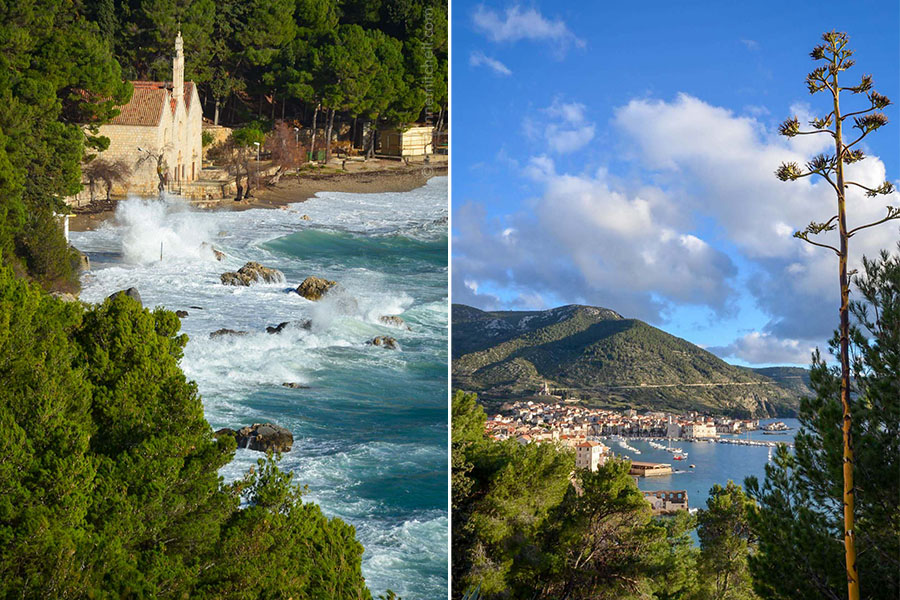
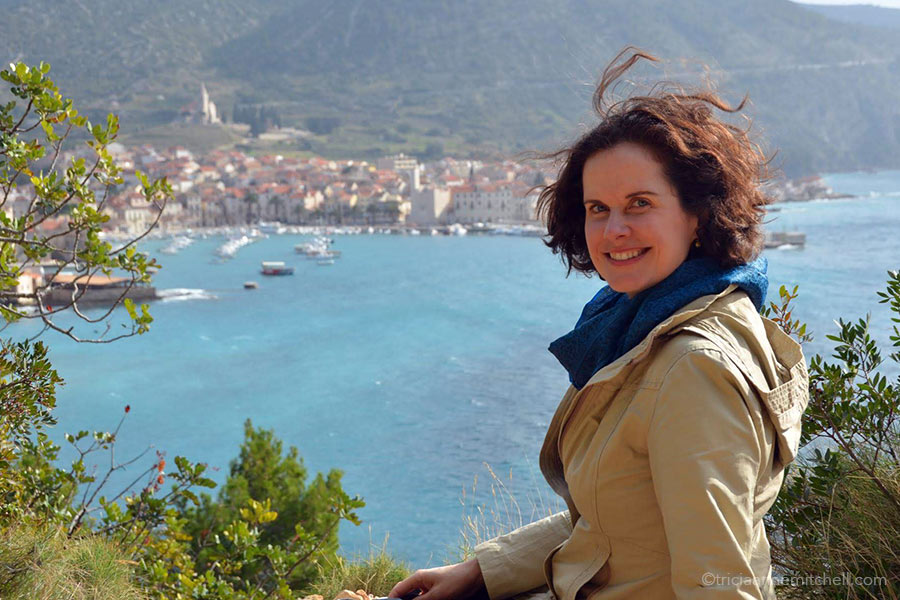
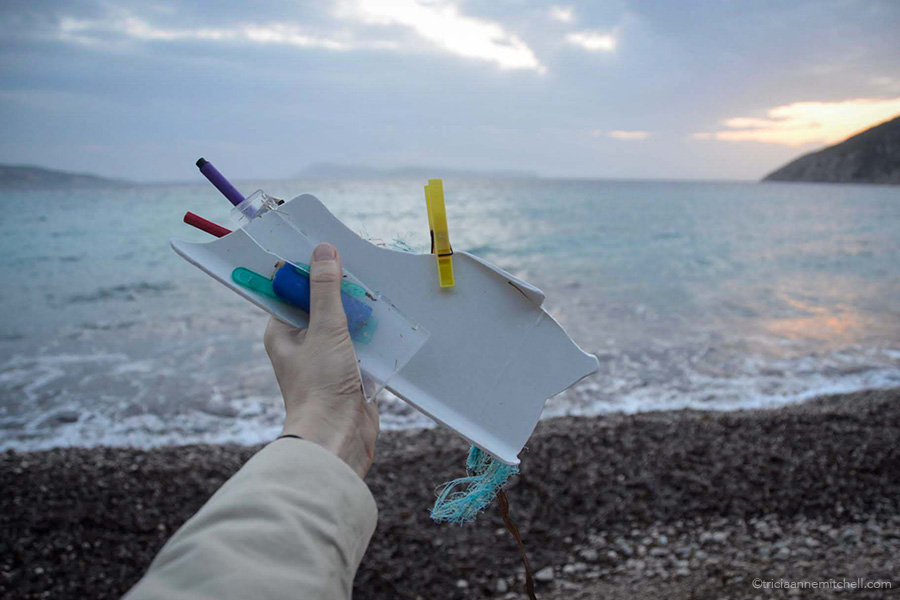









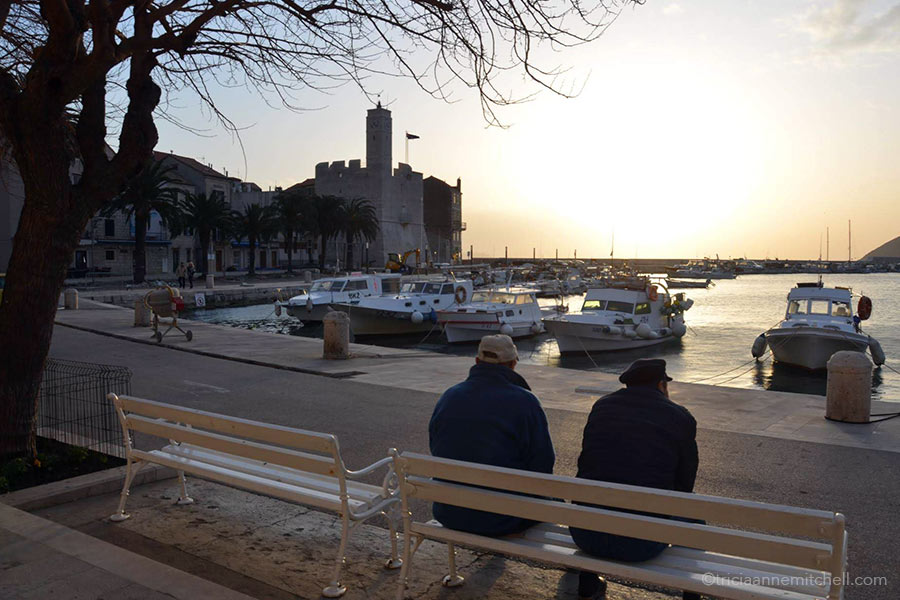


Shawn’s Video:
Where in the World?
Planning Pointers:
How do you get to the island of Vis?
Located southwest of Split (Croatia’s second-largest city), Vis is one of Croatia’s most remote islands. You can get to Vis Town via ferry or catamaran. From Split, the ferry trip takes about 2 hours and 20 minutes, while the catamaran ride is about 1.5 hours.
Visit the Jadrolinija website to see ferry timetables and ticket prices. It is also possible to island-hop to Vis from the neighboring islands of Brač and Hvar.
Note that Jadrolinija is Croatia’s state-owned ferry company, which makes trips from Split to Vis year-round. During the tourist season, it’s also possible to travel via private boat or catamaran.
Accommodation in Komiža, on Vis Island:
We spent 4 nights at the Apartment Mare (affiliate link), in the town of Komiža on Vis’ western coast. When I read other guests’ reviews praising the Apartment Mare’s magnificent views, I was skeptical. However, when we arrived, we couldn’t stop marveling at the magnificent vistas before us. The island of Biševo was straight ahead, framed by swaying sea palms and Vis’ rugged coastline.
Even though we visited Komiža during the winter months, the weather was pleasant enough to sit on the balcony. We spent many hours there, soaking up the sunshine and staring out into the sea.
The apartment was cozy and clean, the internet and heater worked well, and our host, Katarina, was happy to answer any questions we had about the island.
We were just a short walk (down a series of stairs) to Komiža’s main beach, and the town of Komiža was only about eight minutes away.
Also just outside the Apartment Mare’s doorstep: great walking trails, and more superb views of Komiža.
Looking for more Croatia trip-planning inspiration?
From exploring the 1,700-year-old palace of the Roman emperor Diocletian and meeting one of Dalmatia’s few remaining silver filigree master jewelers to foraging for wild asparagus in the Croatian countryside, see all of my posts from Croatia.
Photography & text © Tricia A. Mitchell. All Rights Reserved.

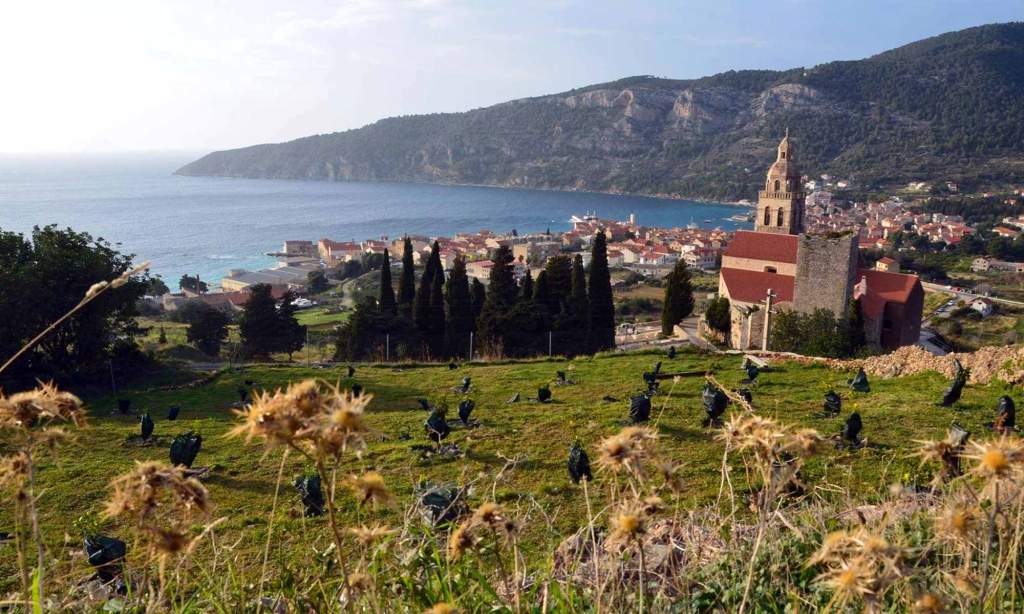
Leave a reply to Darlene Cancel reply